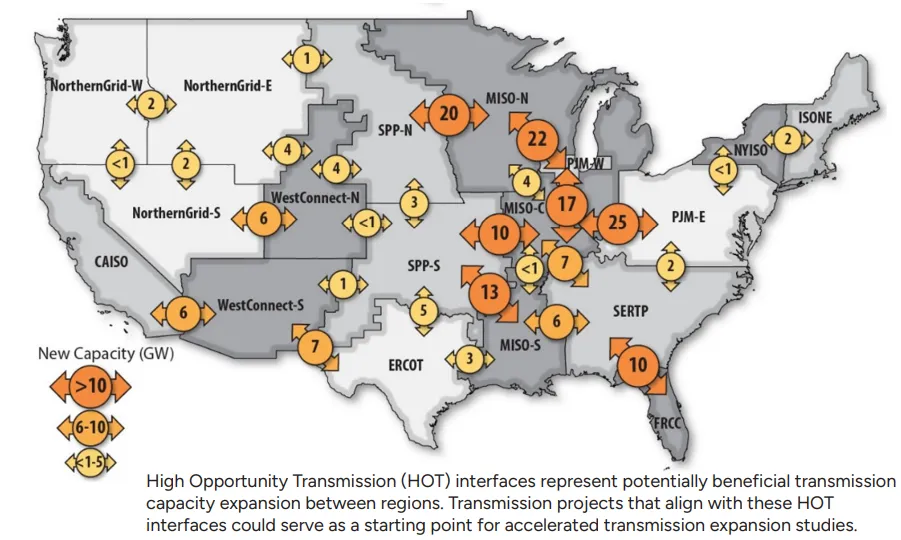The U.S. Department of Energy on Thursday released a transmission planning study that provides a framework for interregional transmission development, including potential “high opportunity” interfaces between grid interfaces.
The National Transmission Planning Study can be used by utilities and grid planners to identify projects for possible development, according to Maria Robinson, director of DOE’s Grid Deployment Office.
“It's not necessarily a blueprint, in as much as it is a toolbox, and it will allow grid planners to be able to pick and choose what makes the most sense for their individual region,” Robinson said Wednesday during a media briefing.
The study developed by DOE’s renewable energy and Pacific Northwest national laboratories included 96 scenarios that consider various sensitivities, including electric demand, carbon emissions targets and transmission technologies. It models potential transmission scenarios with a focus on interregional connections through 2050 and, in a breakthrough compared to previous studies, goes to the nodal level for its analysis through 2035, according to Robinson.
Currently, there is a lack of interregional transmission planning in the United States and the study aims to fill that gap with potential options that could be considered by grid planners, according to Robinson.
The study identifies high opportunity transmission interfaces that provide broad benefits across many scenarios. “Transmission projects that align with these HOT interfaces could be strong candidates for further study and serve as a starting point for accelerated transmission expansion,” DOE said in the study.
The so-called HOT interfaces include alternating current projects, point-to-point projects and multiterminal high-voltage, direct-current projects.

“When translating zonal scenarios to nodal network models, HVDC was found useful for transferring power over long distances and between interconnections, but AC network expansion will continue to be the best solution for a large portion of transmission additions,” DOE said in the study.
The study found that building out interregional transmission can produce major cost savings. By 2050, an AC buildout would save $270 billion, a point-to-point expansion would save $380 billion and an HVDC buildout would save $490 billion under a mid-demand scenario that cuts power sector carbon emissions by 90% by 2035, according to the study.
“We know that it's really important for electric consumers right now to be taking into consideration costs, and sometimes we do that much more in a short-term level than on the long term,” Robinson said “That's why this type of study is so important, for us to be able to look at those longer term benefits.”
The study found that every dollar spent on transmission saves $1.60 to $1.80 in overall system costs, partly through expanded access to lower cost electricity and resource sharing across regions.
The Grid Deployment Office said it plans to share the study’s findings and analytical tools with grid planning entities, grid operators, utilities, states and tribes to advance interregional transmission planning at the state, regional and interregional levels.
DOE’s study comes as the North American Electric Reliability Corp. is preparing a study that examines the amount of power that can be transferred between regions. Congress required the grid watchdog to file the report with the Federal Energy Regulatory Commission by Dec. 2.















